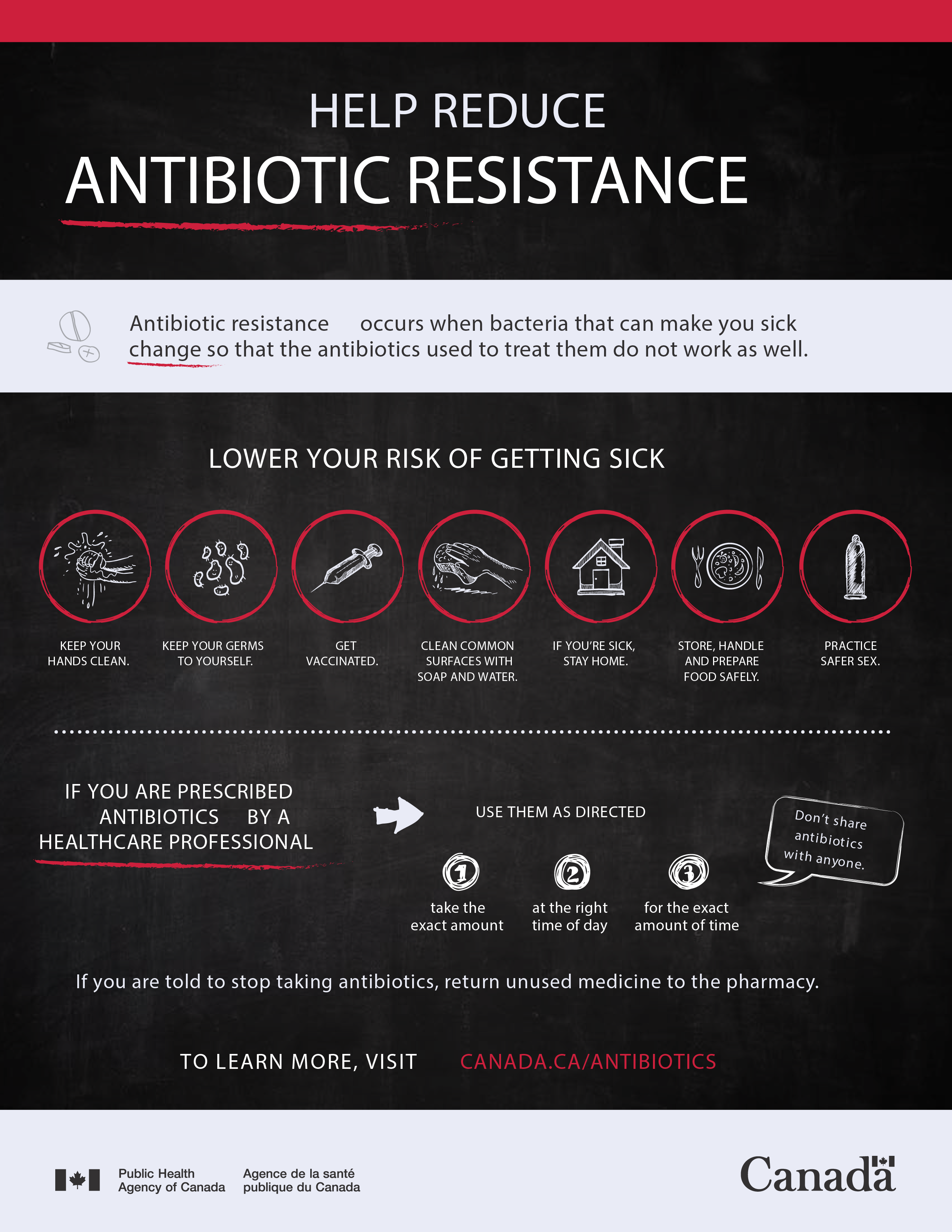Antimicrobial resistance (AMR) is a phenomenon in which microbes such as bacteria, viruses, fungi, and parasites evolve over time and no longer respond to medicines that have long treated the infections they cause. This makes infections more challenging to treat and increases the risk of disease spread, severe illness, and death.
In this 2-video, Dr. Jon Stokes shares why AMR is “an under-discussed pandemic” and how antibiotics "uphold the entirety of modern medicine".
Download a transcript of this video.
The World Health Organization considers AMR to be one of the top ten threats to global health. It is estimated antimicrobial resistance was directly responsible for 1.27 million deaths globally in 2019 and contributed to 4.95 million deaths.(1) Estimates suggest that the annual number of deaths could increase to 10 million by 2050.(2)
What can you do to reduce antibiotic resistance? Learn more with this infographic and additional information on the Health Canada website.

Give us your feedback on this video with this 2-question survey.





